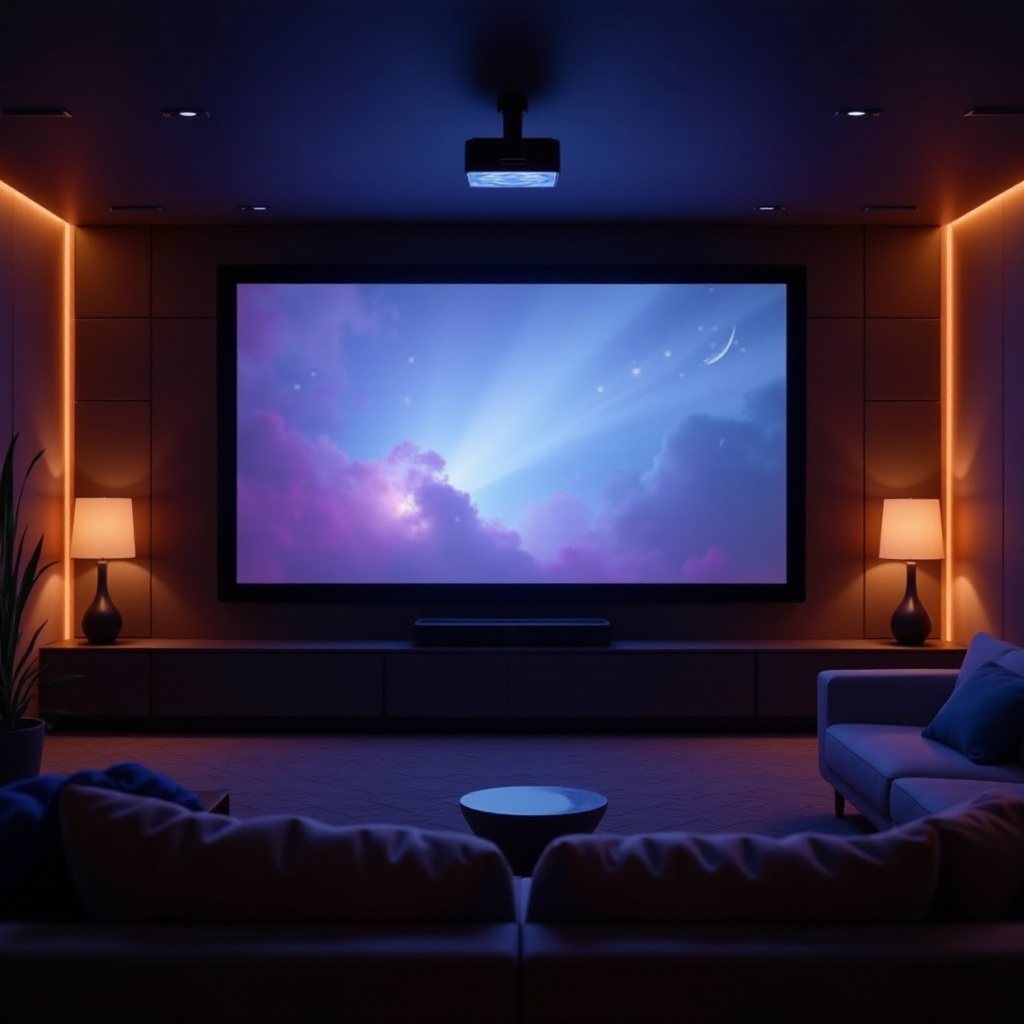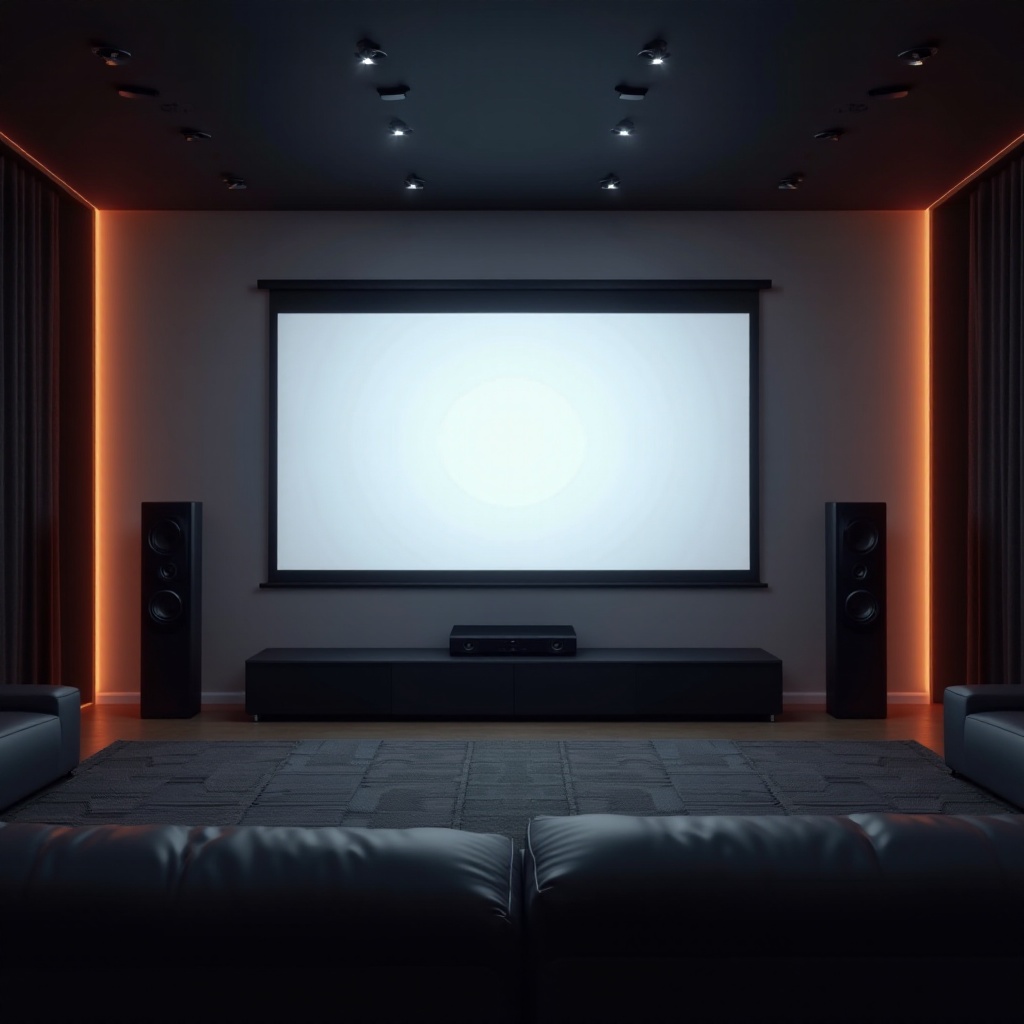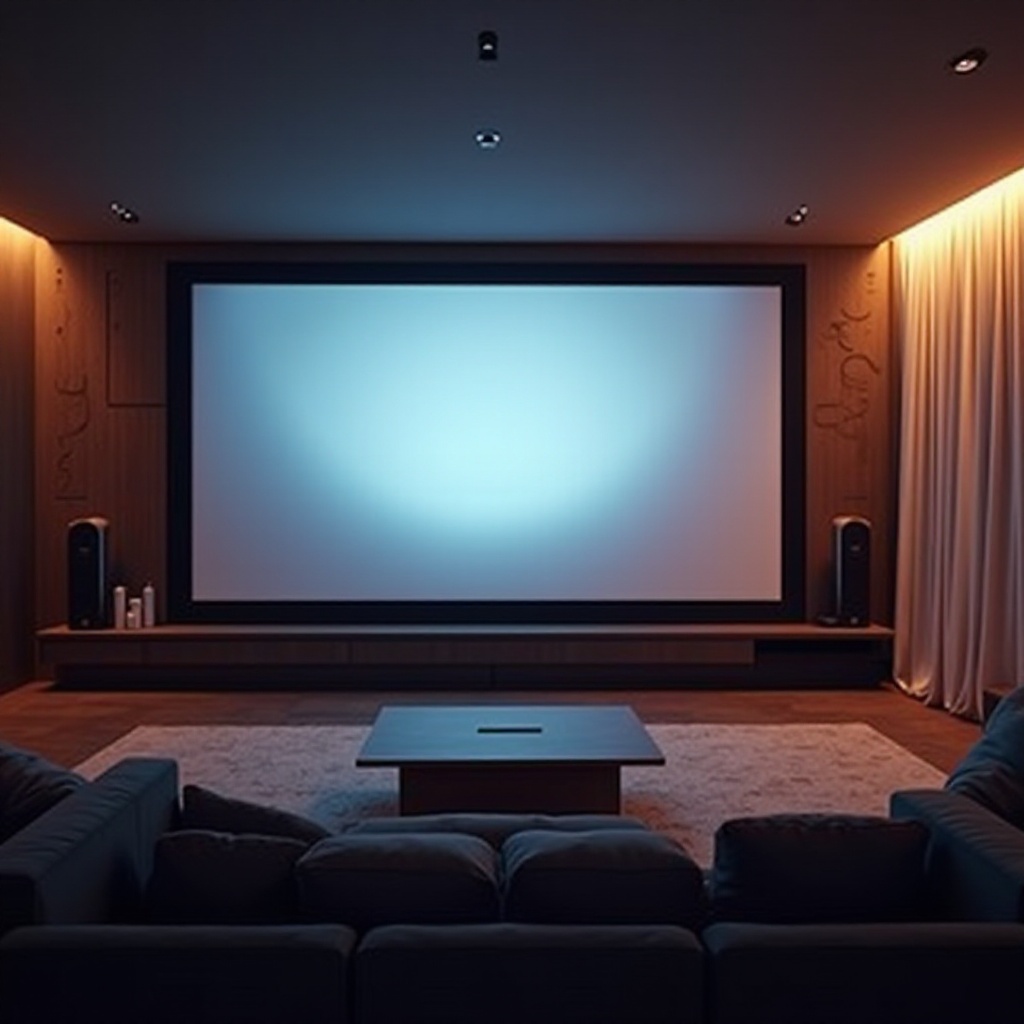Introduction
Creating an unparalleled home theater experience requires the perfect blend of audio and visual components. An acoustically transparent projector screen allows sound to pass through without interference, providing a seamless integration of visual clarity and audio precision. By selecting the best acoustically transparent projector screen, you can transform your home entertainment space into a cinema-quality environment.

Understanding Acoustically Transparent Projector Screens
Acoustically transparent projector screens are designed to allow sound to travel through the screen material without distortion. This feature is particularly useful when placing speakers directly behind the screen to create an immersive audio experience that complements the high-definition visuals. The key advantage of these screens lies in their ability to hide audio equipment, ensuring that viewers receive both optimal viewing angles and sound quality.
The technology behind acoustically transparent screens involves specialized woven materials or perforated surfaces. These materials maintain image integrity while letting sound waves pass through. This dual functionality makes them a preferred choice for home theaters, where the aesthetic arrangement of speakers and screen is vital for combining visual pleasure with audio excellence.
Key Features to Consider
Selecting the right acoustically transparent projector screen involves evaluating several key features that determine performance and compatibility with your setup.
Material Quality and Acoustic Performance
The screen’s material plays a crucial role in both visual and acoustic performance. Woven materials typically offer high fidelity for audio, whereas perforated screens provide clear visuals. It’s essential to choose a material with minimal impact on sound attenuation to ensure the highest quality audio transmission.
Gain and Viewing Angles
Gain refers to the screen’s ability to reflect light. A higher gain can enhance brightness, making images pop in well-lit environments. However, high gain might reduce viewing angles. For home theaters, mid-range gain screens are often ideal, balancing brightness and wide viewing angles for everyone in the room.
Compatibility with Projectors
Ensure that the projector screen is compatible with your projector’s specifications. This includes considering the projector’s resolution, aspect ratio, and throw distance. Compatibility ensures that you experience the full potential of your projector and screen setup.

Top Acoustically Transparent Projector Screens of 2024
Let’s explore some of the best acoustically transparent projector screens available in 2024. These screens stand out for their exceptional quality, innovative design, and user satisfaction.
Screen Alpha Overview
Screen Alpha combines a high-quality woven material with excellent acoustic transparency. It features a 1.0 gain, making it suitable for various lighting conditions while retaining wide viewing angles. The screen is compatible with 4K and 8K projectors, ensuring a future-proof investment for your home theater.
Screen Beta Overview
Screen Beta offers a perforated design known for its fine balance between audio transparency and visual performance. With a 0.8 gain, it provides deep black levels and accurate color reproduction. This screen works seamlessly with high-definition projectors, making it a great choice for a cinema-like experience at home.
Screen Gamma Overview
Screen Gamma stands out with its hybrid approach, combining both woven and perforated elements. This design ensures minimal sound attenuation and vibrant image quality. It boasts a 1.1 gain, perfect for bright environments, and supports up to 8K resolution for an immersive viewing experience.
Comparing the Best Options
When comparing Screen Alpha, Beta, and Gamma, several factors come into play. Screen Alpha excels in offering wide viewing angles and compatibility with high-resolution projectors, making it an all-rounder. Screen Beta’s perforated design is ideal for customers focusing on deep blacks and color accuracy. Meanwhile, Screen Gamma offers the best of both worlds with its hybrid design, suitable for various light conditions and excellent audio transparency.
The choice among these screens depends on your specific needs—whether it’s brightness, audio quality, or resolution compatibility. Evaluating what you prioritize can help you make the best selection for your home theater setup.
Installation and Acoustic Optimization Tips
Installing an acoustically transparent projector screen involves careful placement and calibration to optimize both audio and visual performance. Here are some tips to guide you:
- Mounting Position: Place the screen at a height where the center of the screen aligns with the viewer’s eye level when seated.
- Speaker Placement: Position speakers directly behind the screen to fully utilize the acoustic transparency feature.
- Room Acoustics: Treat the room with acoustic panels to minimize sound reflections and enhance audio clarity.
Proper installation and acoustic optimization ensure that your projector screen delivers the best performance, bringing a high-quality cinema experience to your home.

Conclusion
Investing in the best acoustically transparent projector screen can significantly enhance your home theater experience. By understanding the key features and comparing top options like Screen Alpha, Beta, and Gamma, you can select the ideal screen that meets your visual and audio needs. Proper installation and acoustic optimization further elevate your setup, making movie nights truly spectacular.
Frequently Asked Questions
What are the benefits of an acoustically transparent projector screen?
An acoustically transparent projector screen allows sound to pass through without distortion, enabling optimal speaker placement behind the screen. This leads to a more immersive audio experience and a cleaner setup.
How do I install an acoustically transparent projector screen?
To install, mount the screen at eye level, position speakers directly behind it, and treat the room with acoustic panels. Follow the manufacturer’s instructions carefully to ensure correct setup and performance.
Are acoustically transparent screens suitable for all projectors?
Yes, but it’s essential to check compatibility. Ensure the screen matches your projector’s resolution, aspect ratio, and throw distance for optimal performance.
